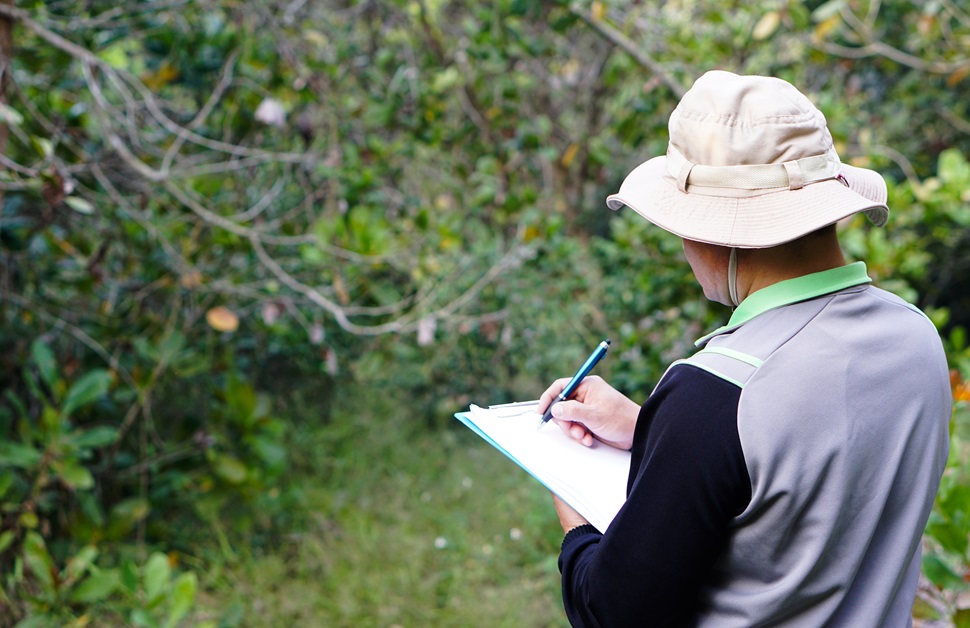An Outline of Biodiversity Net Gain Assessment Reports
February 2024 marked the first time that biodiversity net gain (BNG) was enforced as a legal requirement in the planning process. It acts as a long-term protective and enhancement measure for the natural environment from the Environment Act 2021. To achieve BNG, developers are inclined to prove to the local planning authorities that biodiversity has been improved to a measurably better state on their development site for a minimum of 30 years.
Mandatory BNG is expected to be a permanent element of planning moving forward, and due to that, developers are urged to grow an understanding of the concept and everything it entails. One important factor is that without a biodiversity net gain report, the local planning authority will not even consider an application for planning permission. In this blog, Arbtech helps any uncertain developers with a deep dive into what a BNG report does and why it’s important.
Difference Between a BNG Report and a BNG Plan
It is common for a report and plan to be addressed as one and the same during biodiversity net gain assessments. Although both are similar and generally appear together, each document has a different purpose that contributes to the continued success of new developments and the act of supplying sufficient biodiversity net gain information to meet the requirement. A report and plan will eventually go on to provide an equally important role in supporting your planning application to the local authority.
A biodiversity net gain report would detail the findings from the survey such as the ecological features on the development site, metric readings and any important observations. A biodiversity gain plan, on the other hand, would outline the steps needed to retain the standard of the site and build on it by the 10% minimum increase. Both are vital to the planning process, but as they are often paired together, a BNG report or BNG plan could be a term used to incorporate both documents into one.

Features of a Biodiversity Net Gain Report
Multiple vital and universal components appear within a biodiversity net gain report to give the local authorities all they need to ease planning decisions and provide developers with sufficient insight to guide their development plans. In the section below, we break down each attribute of a BNG report, including the baseline and impact assessments, calculations and metrics, utilisation of the mitigation hierarchy, and the potential for using statutory biodiversity credits.
Baseline Assessment
Across a prior desk study of known existing habitat in the local vicinity and a physical inspection of the site including all animal and plant species, an ecological consultant will be able to establish the current biodiversity value within the red line boundary. BNG assessments involve a comprehensive attention to detail, with each element possessing a unitary value that will accurately reflect the state of the development site.
Once all the readings are added together, a resulting figure will be created. The pre-development figure will include all attributes of the affected area and enable the ecological surveyor to harness an extensive understanding of the site’s biodiversity before any development works take place. A pivotal part of measuring biodiversity and executing sufficient net gains, the reading will dictate how the remainder of the BNG survey process plays out.
Impact Assessment
In order to be able to make comparisons with the state of the natural environment after the development, the ecologist must create a biodiversity value that reflects the predicted condition of the site. Between a complete review of all development plans and in-depth conversations with the developer and anyone else involved in the planning project, it will be possible for a BNG consultant to formulate a reading that incorporates all biodiversity outcomes from the project.
All factors will be worked into the post-development figure, including any habitat loss caused by the removal of natural features or any habitat gain from operating with a sustainable or green approach. Using pre-development and post-development figures makes it possible to convert current and future assets all over the site into numerical data sets. Both numbers can then be analysed and compared to secure the 10% gain and meet the BNG objective.
Biodiversity Metric Calculations
Since the concept of BNG requirements was first announced in 2019, the Department for the Environment, Food and Rural Affairs (DEFRA) led the way in providing the statutory biodiversity metric. It has been updated several times since then, with DEFRA producing altered versions of the biodiversity metric based on feedback from professional ecologists, consultations with various groups and changes to laws affecting planning and ecology from the government.
DEFRA has also opened up the possibility of creating different metrics, such as a small sites metric that was released in April 2024 to achieve biodiversity net gain on any developments involving a small site. That said, all metrics will be used the same way, with the resulting pre-development and post-development values of biodiversity compared with each other to establish any deficit between the two before navigating a way to secure the 10% requirement.
Mitigation and Compensation Measures
Referring to the results of the biodiversity calculation, the ecological consultant will decide on the best ways of generating new habitat creation, counteracting any negative impact on the site and enhancing biodiversity. As with ecological surveys, a biodiversity gain hierarchy system will be used, with avoidance of ecological features coming as the priority outcome, then followed by minimisation of damage, restoration of other features, and offsetting to elsewhere.
By following the steps in the hierarchy, the legal requirements can be met correctly without unnecessarily harming rare or valuable ecological assets. It also avoids any exercises that aren’t needed if the quantity of habitat lost is only minimal, such as the process of creating new habitats or adding more trees and hedgerows to the site. Chosen measures will vary depending on the further information taken from the site during the baseline and impact assessment stages.
Off-Site Gains
A biodiversity net gain consultant will always do everything possible to see the legal agreement achieved on-site. It isn’t, however, always viable, and whenever that happens, they will be left with the last resort option of investing in off-site biodiversity gains. The biodiversity units needed to deliver BNG have already been confirmed over the previous steps, so the developer would just need to purchase statutory biodiversity credits of the same quantity.
After lots of changes to the system, biodiversity offsetting is now carried out within a set structure. A BNG register exists for indexing all available sites and a land agent can be used to target a specific land use or ensure that the number of excess units can be bought as off-site biodiversity units. Landowners across the country own land specifically for selling to developers as biodiversity credits, compensating for any biodiversity units that cannot be made up on-site.
Why is a BNG Report Important?
With local authorities demanding evidence of compliance with the BNG policy, a biodiversity net gain report couldn’t be more crucial for ensuring that all of the boxes are ticked. Only a BNG report will be able to confirm the current and predicted state of the site, and as it will be acknowledged as trustworthy, reliable and accurate information, it will influence the planning officer’s decision when it comes to granting or denying planning conditions.
As well as matching the parameters of the local planning authority, a biodiversity gain report also sees developers falling in line with other planning obligations, such as local nature recovery strategies (LNRS), nationally significant infrastructure projects, sites of special scientific interest (SSI), and any sites with current protective measures in place, such as a conservation covenant. It also coincides with the aims of each relevant responsible body, including CIEEM, DEFRA and Natural England.

Refer to the Ecological Consultants at Arbtech
Before you can achieve biodiversity net gain on your development site, you will need a BNG report containing a reading of the site’s current and predicted biodiversity value using the latest biodiversity metric, on-site or off-site changes, and any other information that will contribute to improving nets gains of biodiversity to a measurably better state. With that, you should see no substantial problems with obtaining planning applications.
Clients rely on Arbtech for past, present and future development projects, and throughout the rise of biodiversity net gain, we’ve maintained an updated knowledge and expertise in the policy, conducting assessments for it and assembling plans and reports. To discuss your options, visit our site to complete a quote form, call us directly, email us or visit our socials. Based on your details, we can send you a free quote for any assessments on your development.


